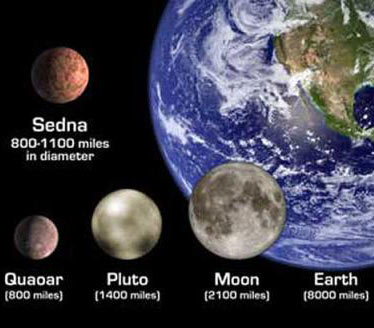Professur
Well-Known Member
LOS ANGELES (AP) - It is a frozen world more than 12.9 billion kilometres from Earth and believed to be the farthest known object within our solar system.
NASA planned to offer disclose more details on Monday about Sedna, a planetoid between 1,290 kilometres and 1,770 kilometres in diameter, or about three-quarters the size of Pluto. Named for the Inuit goddess who created the sea creatures of the Arctic, Sedna lies more than three times farther from the sun than Pluto. It was discovered in November.
"The sun appears so small from that distance that you could completely block it out with the head of a pin," said Mike Brown, an astronomer at the California Institute of Technology who led the NASA-funded team that found Sedna.
That makes Sedna the largest object found orbiting the sun since the discovery of Pluto, the ninth planet, in 1930. It trumps in size another world, called Quaoar, discovered by the same team in 2002.
Brown and his colleagues estimate the temperature on Sedna never rises above -200 C, making it the coldest known body in the solar system.
Sedna follows a highly elliptical path around the sun, a circuit that it takes 10,500 years to complete. Its orbit loops out as far as 135 billion kilometres from the sun, or 900 times the distance between Earth and our star.
Brown and Chad Trujillo of the Gemini Observatory in Hawaii and David Rabinowitz of Yale University discovered Sedna on Nov. 14, 2003, using a 122-centimetre telescope at Caltech's Palomar Observatory east of San Diego.
Within days, other astronomers around the world trained their telescopes, including the recently launched Spitzer Space Telescope, on the object.
The team also have indirect evidence a tiny moon may trail Sedna, which is redder than all other known solar system bodies except Mars.
Source

